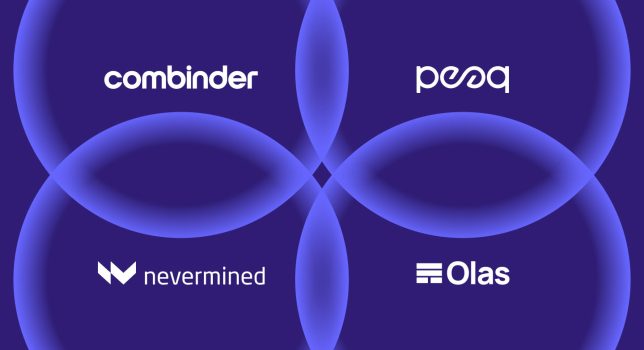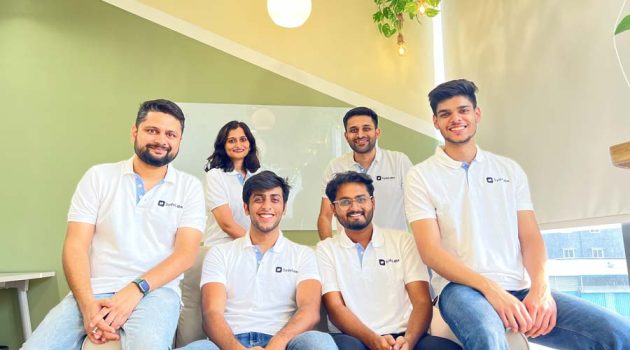4 Interesting Sectors Using AI
Is Artificial Intelligence (A.I.) a good thing or bad? There is much debate on this question as many sectors of our society adopt A.I. practices and weave this rapidly evolving technology into every aspect of our lives. Before we cast judgment on the dangers it may reveal, a closer look into the benefits it brings is warranted.Out of many sectors using AI we have identified 4 interesting sectors that use AI in their processes and practices. In our current economy, a few sectors have been in the news more than others.
AI in Healthcare
Healthcare is the ideal industry to make extensive use of A.I. Records have been kept for medical consultations and procedures as early as the 1920s. Electronic medical record systems made their entrance into the healthcare system in the 1960s. With the passage of the Health Insurance Portability and Accounting Act (HIPAA) in 1996, patients were able to obtain copies of their medical records. Most paper-based records before the 1960s have since been destroyed. The amount of data that has been accumulated since then is staggering.With the rise of Big Data, all this information collected from a vast number of sources and in very different formats, and even languages, our medical records could finally be aggregated, standardized, and consumed by advanced analytical systems. They could be seen nearly instantly by your doctor during your visit. That alone was an incredible advancement in healthcare.

Now, A.I. is finding a home in healthcare. Microsoft, IBM, Google, Apple, and other technology giants have entered the healthcare sector. They are applying A.I. to a range of disciplines within healthcare, including mining the data that has been accrued by patients and healthcare professionals around the world for nearly 80 years.When Covid-19 was viewed as a world health crisis, many scientists began the search for testing solutions and worked toward identifying a vaccine. Modern Healthcare published a story in May of this year, highlighting the value of A.I. in Covid-19 testing.Eighteen months before the coronavirus arrival to the U.S., a team at the University of California – San Diego, led by Dr. Albert Hsiao, was working on a process to identify pneumonia patients from chest X-ray images. Their method used machine learning algorithms to place dots of color onto scanned images to highlight areas of lung damage or possible pneumonia. By scanning thousands of X-ray images, the team has been able to present diagnostic images identifying patients with the highest risk of complications.With the spread of Covid-19, Dr. Hsiao’s team has been able to compare X-rays of Covid-19 patients and identify markers that occur only in those infected. Using A.I. image recognition to identify patterns unique to Covid-19 enables doctors to identify patients who are infected but do not show symptoms.Using chest X-rays is not the safest nor cost-efficient method to test the general public for the virus. Still, Hsiao’s work is an excellent example of how A.I. can be used in medical diagnostics to produce results not only faster, but more comprehensive and exact than those of a healthcare specialist. The use of A.I. in healthcare is already wide-spread. It will continue to expand into new areas, leading to the discovery and execution of comprehensive, yet acutely detailed, diagnostic procedures and treatments.Healthcare has only begun its journey into A.I. With the application of Natural Language Processing (NLP) in drug safety, Machine Learning (ML) to find patterns within populations, and more, healthcare is primed to take monumental steps forward. Through the secure exchange of health data, breakthroughs will benefit patients everywhere.A.I. in healthcare is not solely for discovery and treatment. We will see predictions in behavioral patterns, improvements in patient care, and DNA analytics that will raise awareness, as well as controversy. Artificial Intelligence will have an immeasurable impact on the quality of healthcare and the betterment of all our lives.
AI in Education
It seems logical that education would embrace technology to improve student learning and provide much-needed assistance to educators, but the education sector has not changed significantly for generations. Our children still walk or are driven to a physical schoolhouse where a teacher stands at the head of a room filled with children seated at small desks. Some teachers use the same methods that have served them well for 10 to 20 years.The use of AI in education is changing the approach from a group solution to personalized and dynamic learning paths for each student and every subject. The result is a highly effective learning experience. Teachers can provide individual assistance to students needing extra help while not impacting the educational growth of other students.

Over a decade ago, the State of Utah funded an in-home Pre-K program for four-year-old children. The program was initially administered to children from impoverished homes and to those for whom English was a second language. The program (UPSTART) was administered by the Waterford Institute, headquartered in Utah. The program used intelligent sequencing of each child’s learning experience based on performance, usage patterns, and engagement level. Each child had a personal learning path through thousands of educational games and assessments.Data were accumulated and analyzed to identify areas needing additional content and better instruction. With the large amount of data available, the application of A.I. will increase the quality of content being presented to children and better prepare them for future learning experiences both within a structured teaching environment and using on-line personalized approaches.Programs, like UPSTART, are widely used in the U.S. and throughout the world. With the spread of Covid-19, home-based learning solutions have become crucial. When A.I. is used in digital learning environments, the education of our children improves. It will rise to higher levels and help guide the future of home and school integration in the education sector. Many areas of the teaching process can be transitioned to homes or remote locations. We have seen this with on-line education opportunities for adults. College degrees are earned without ever setting foot on a campus. With recent applications of A.I. to the adult learning industry, course recommendations can be tailored to specific goals, as well as performance and effort. We can take a pre-assessment to determine where our learning journey should begin to achieve the best results in the shortest amount of time.Recently, with the spread of the coronavirus, students were not able to leave their homes and attend school. A.I. systems were in place in many parts of the world, allowing students to continue their learning experience un-interrupted. Unfortunately, A.I. solutions come with a cost, and many schools did not have such systems in place. Many children were not afforded the benefit A.I. offers. This will change over time, but A.I. is still a developing concept in our current education system.
AI in Government
Many people see the government as a gross excess of spending and an enormous workforce paid with our tax dollars accomplishing very little. Others see an employer providing work to people in a society in need of more jobs and an opportunity to spend more to improve our communities. Where you stand in this assessment depends on your political beliefs, personal experiences, or individual frustrations.Regardless, the government constitutes our largest public sector and will remain so long into the future. A.I. will change the way government works and the way it is perceived.

The impact of AI in government is evident when we remind ourselves of the many occupations it includes. To name some that will be heavily impacted by A.I. – the military, FBI, CIA, Secret Service, and Homeland Security. Air Traffic Controllers are government workers. There are many, many more, but you can start to envision the value A.I. can bring to these agencies.The government has actively used A.I. for many years. The integration of A.I. was a simple and highly logical decision made by some agencies within the government. One example is Air Traffic Control (ATC). The management of air traffic is not only complicated but crucial. The decisions made can be matters of life or death. It is difficult to imagine how this process was handled without today’s technology.Air traffic controllers direct every aspect of an aircraft’s journey, from scheduling take-offs and landings on a limited number of runways in every imaginable weather condition, to maintaining safe distances between in-route flights, to real-time adjustments of trajectory, altitude, and speed. With the number of decisions that have to be made based on many data points, automation is critical. A.I. systems in place with ATC account for uncertain conditions, optimize for fuel levels, make essential changes of destination, and even set course adjustments for passenger comfort.The Alan Turing Institute is working with the leading ATC provider in the U.K. (NATS) to explore new ways machine learning can be applied to help evolve the industry. One aspect of their collaboration studies the use of reinforcement learning algorithms to improve the A.I. systems. Oversimplifying the process, the machine teaches itself to do a better job.A detailed summary of the NATS/Turing project is on the Alan Turing Institute website. In that summary, they explain how an A.I. program (or agent) will review an ATC environment (using the same information available to air traffic controllers) and identify potential safety issues. The program will then issue instructions to the various aircraft involved, directing them to safer positions. The A.I. program will be rewarded if the situation improves and penalized if the result degrades the safety level. Based on the feedback, the program makes new adjustments and receive more feedback. The process continues until the A.I. program makes very few, if any, poor decisions. Perfection may not be attainable, but A.I. can get closer to error-free than a human.The U.S. Postal Service is an example of where image recognition now plays an integral role in the delivery of letters and packages. A barcode is usually placed on the envelope or package, helping auto-sorting systems perform with very high accuracy. However, people still write letters – that’s right, write! Image recognition algorithms have become very efficient in deciphering horrible handwriting. Everything from a child using a crayon to shaky handwriting in cursive. Sure, there will be an occasional sorting error, but the machine is taught to recognize similar situations in the future and make more accurate decisions. The average volume of items that need sorting must be overwhelming – not to mention tax season, elections, and how can we forget those badly needed stimulus checks.The number of input data points A.I. can handle and the speed at which it can process the information and make a decision is astonishing. With this level of intelligent behavior, many government agencies are using A.I. to our benefit. We want to learn more about the areas using A.I. in government. Some are fully disclosed, while others remain mysteries. Perhaps it is better left that way.
AI in Cybersecurity
Each one of the sectors covered to this point in this article have strict privacy protection regulations in place to protect the use of personal identifiable information. These sectors of our society require us to share private information that we would not want to fall into the wrong hands. Arguably, they store the most desirable identity and financial data to cyber-thieves and hackers.https://www.youtube.com/watch?v=0IGH2Kq61uw&t=23sTo best protect this data, the cybersecurity sector is also taking strides to integrate A.I. into the protections they offer.

One area where A.I. has yielded incredible results is in biometric logins. Nearly every personal device now requires a fingerprint or a face scan to unlock. Higher levels of secured access are controlled with retina scans, palm prints, or combinations of these biometrics. We are used to seeing these protections in movies and television, but now we are using them every day.Beyond these physical advancements, A.I. is used to detect and stop malicious threats in our digital world. Most people have no idea how many cyber attacks occur each second. The numbers are staggering. It is both impressive and frustrating. For businesses, the effectiveness of alarm systems, motion detectors, and video surveillance is a thing of the past. There will always be theft of physical items, but today and in the future, the items criminals want are in our digital world.Cybercriminals simply troll the internet for vulnerability. This is done by sequentially going to an IP address and attempting a few tried and true methods to can unauthorized access. Once they are “in,” they can conduct a variety of criminal behaviors from which you may never be able to recover. A cybercriminal can “lock” your valuable personal or customer data and demand payment to return access to you. If you don’t pay, they can simply erase your data. Either way, you are a victim. Sometimes, they just want to do damage to prove they can.We have all heard of hackers releasing personal identity information or private financial information from very large, heavily visited sites. You would think the larger technology companies would not be vulnerable to such attacks. The more significant you are, the more hackers will focus on breaking through your defenses.
A.I. can monitor and detect cyber threats with greater speed and can apply safeguards even while the attack is taking place. We can put up more protections and defenses, but those efforts are static and, if penetrated, leave us completely exposed. When identities and financial information is stored or transmitted on-line, the highest level of cybersecurity is required. The use of AI in cybersecurity is not optional. It is mandatory to ensure the highest level of protection.A.I. programs are trained to identify patterns in attacks, behaviors of ransomware, and weaknesses in the safeguards that we have put in place. A.I. can perform real-time analysis of defenses, make corrections or fill gaps, and predict areas of higher vulnerability. This is done with a speed that surpasses any security methods used in the past. When attacks are made or malware has simply sent out a probe, today’s cybersecurity will respond without hesitation, removing the threat before it has a chance to find an entry point.Perhaps you are thinking, “If A.I. in cybersecurity as come that far, why do we still hear about our data being hacked and published?”. The answer is simple but frightening. A.I. has made significant advances in the cybersecurity sector, but the good guys aren’t the only ones with access to A.I. When both sides are using the same technology, sometimes the bad guys win. Maybe they attack someone a little slow to make improvements or who can’t afford top-of-the-line A.I. It will always be a race to find exposed access points in our new digital world. A.I. has given us amazing algorithms and processes to shutdown cyberattacks, but we still can’t let our guard down. Don’t leave your front door unlocked. Don’t leave your keys in the car. Put A.I. to work in your cybersecurity efforts.
Conclusion
Artificial Intelligence will be the defining technological advancement of this century. We are only two decades into the 21st century, but it is clear that A.I. will play a significant role in every sector of society. Technology has completely changed our lives over the past 20 years. A.I. will push that evolutionary process to places not imaged by our greatest thinkers. Even A.I. itself is not able to envision nor comprehend where our society will be at the turn of the next century.









